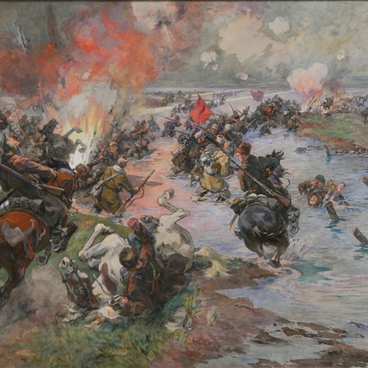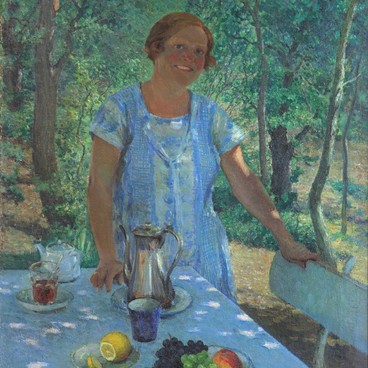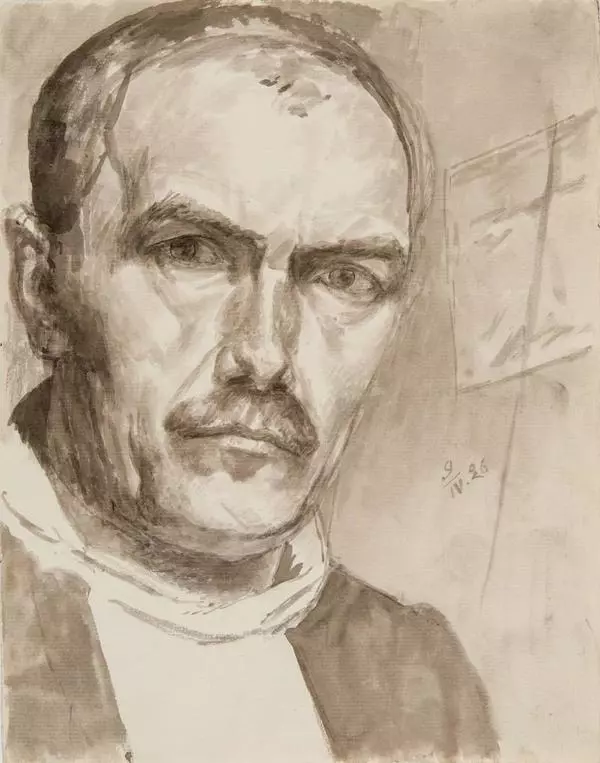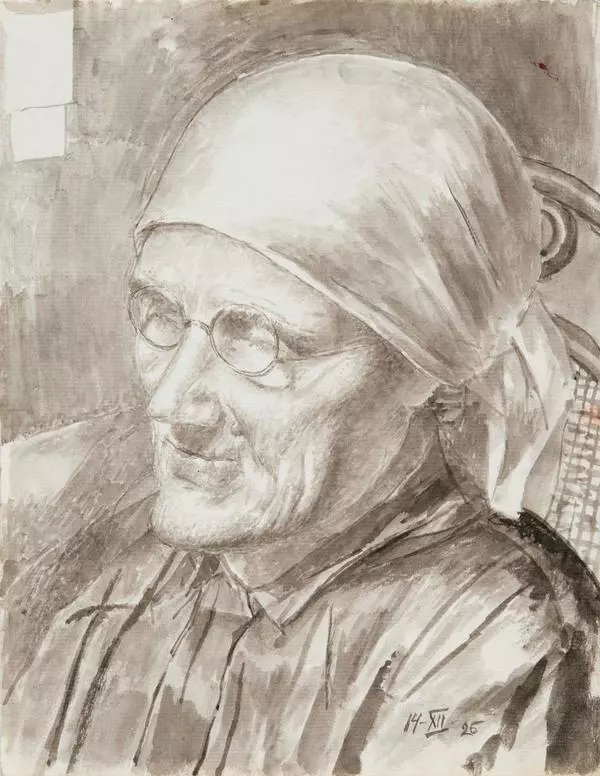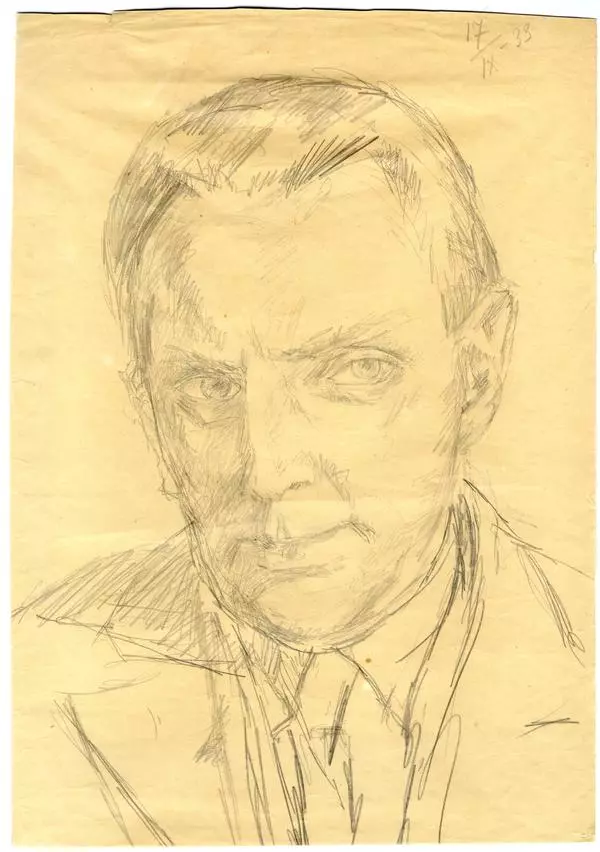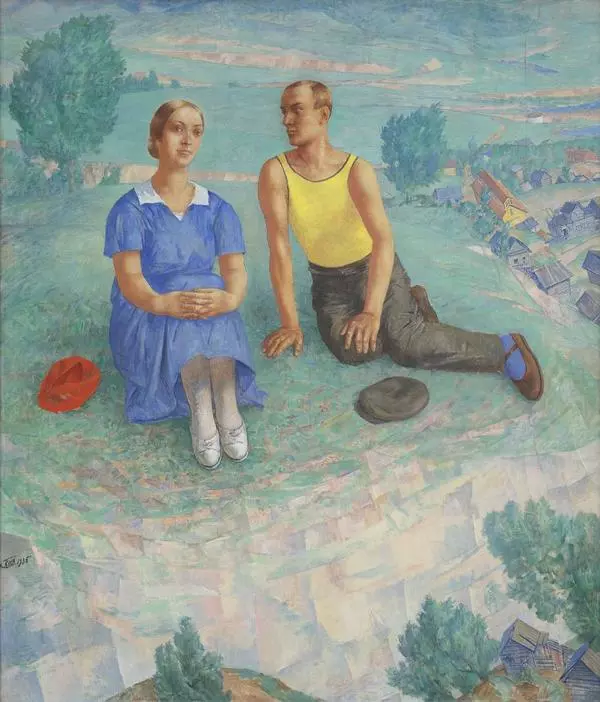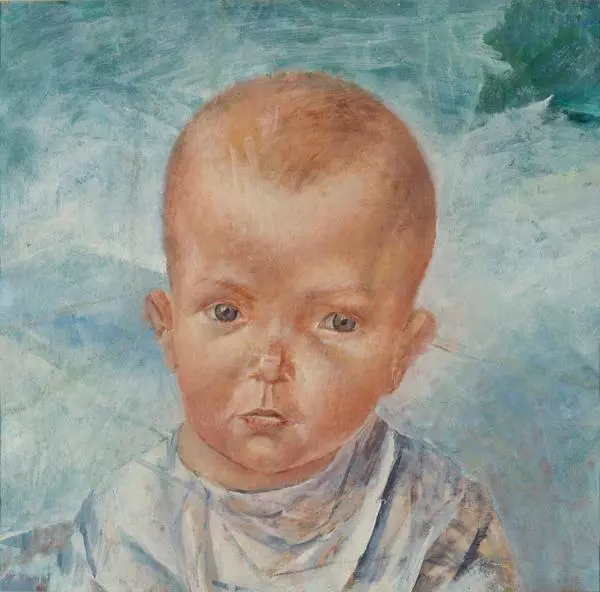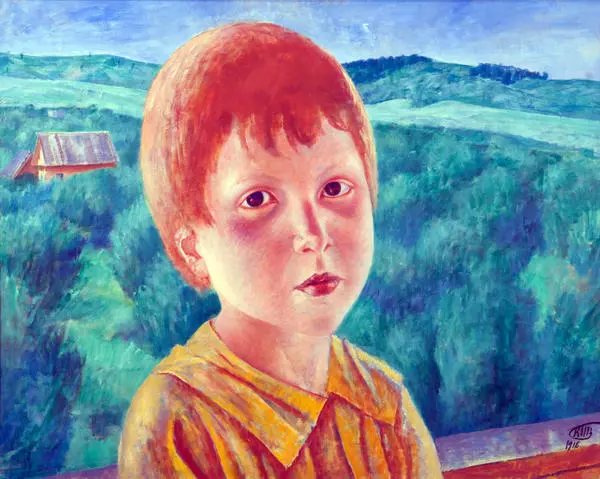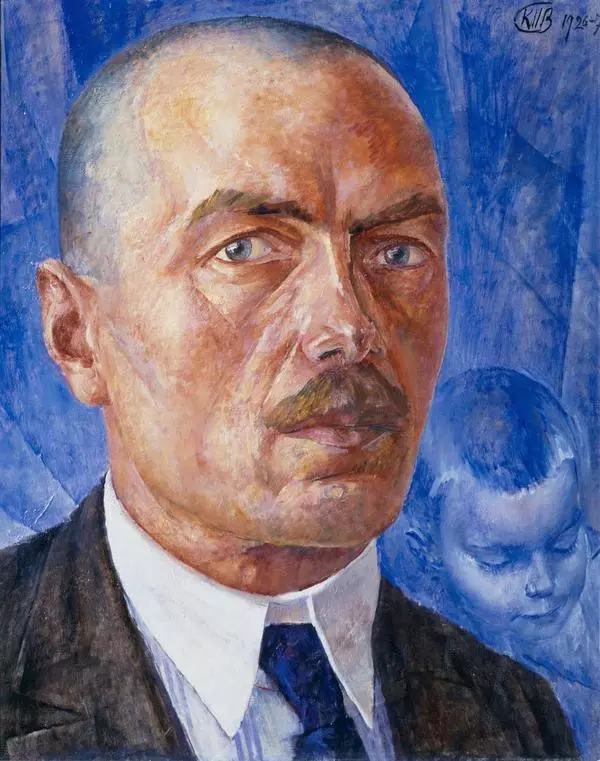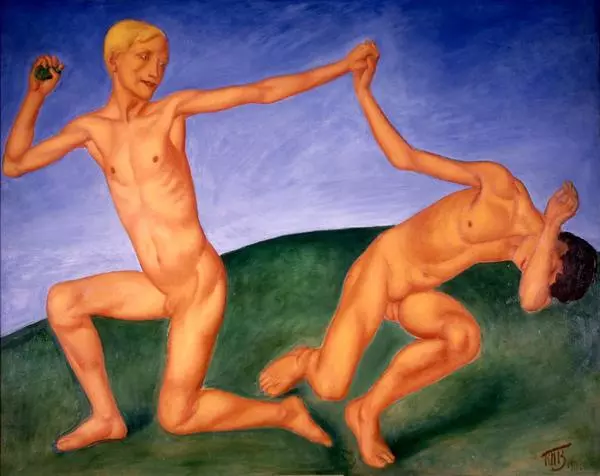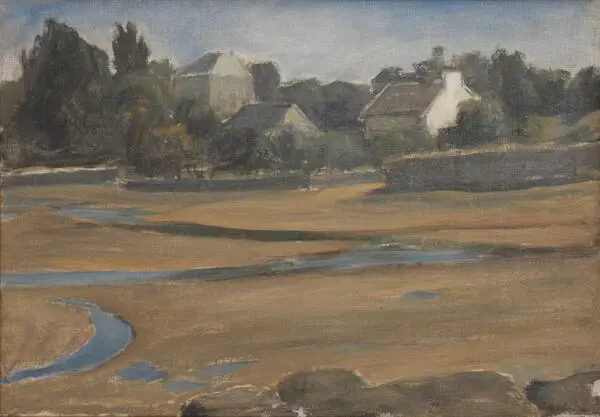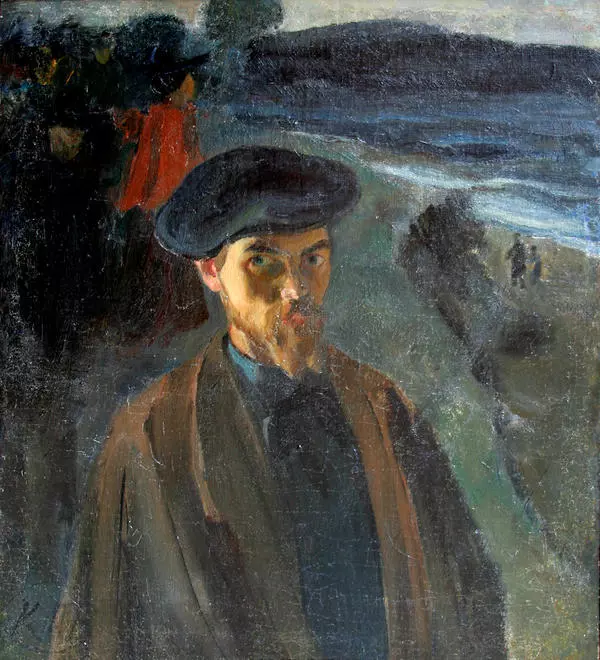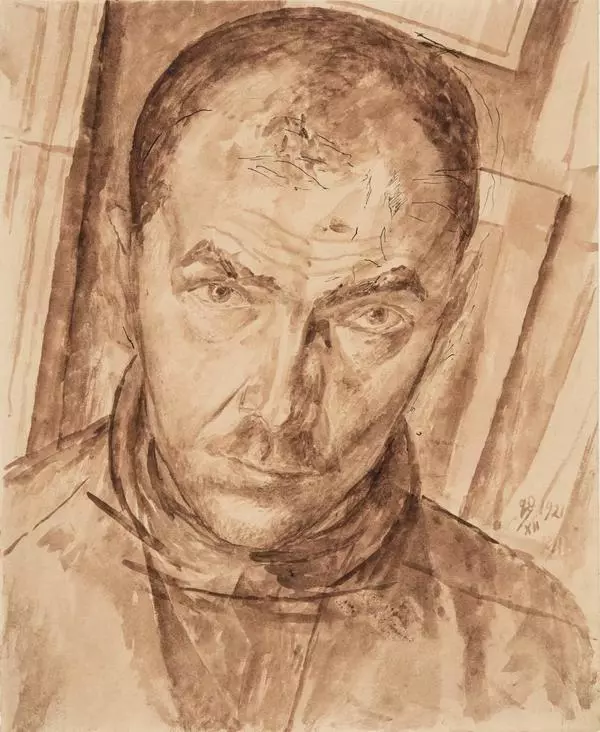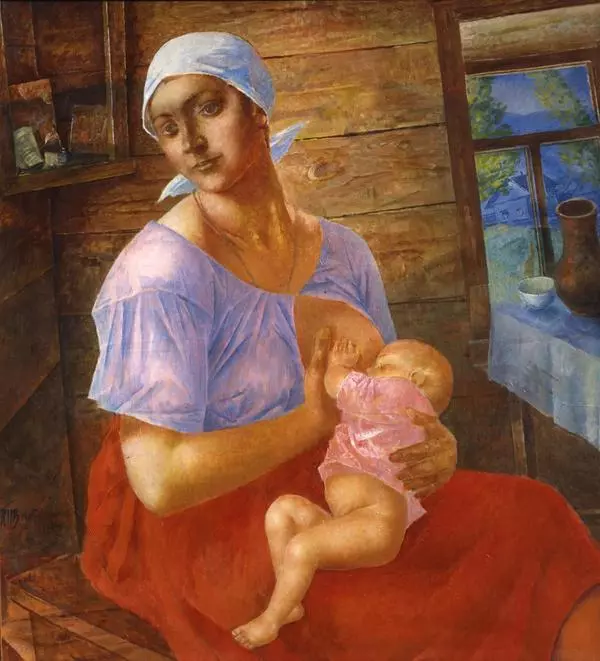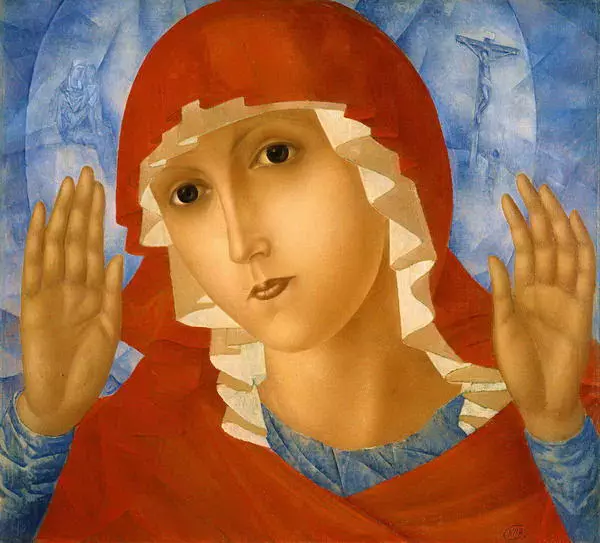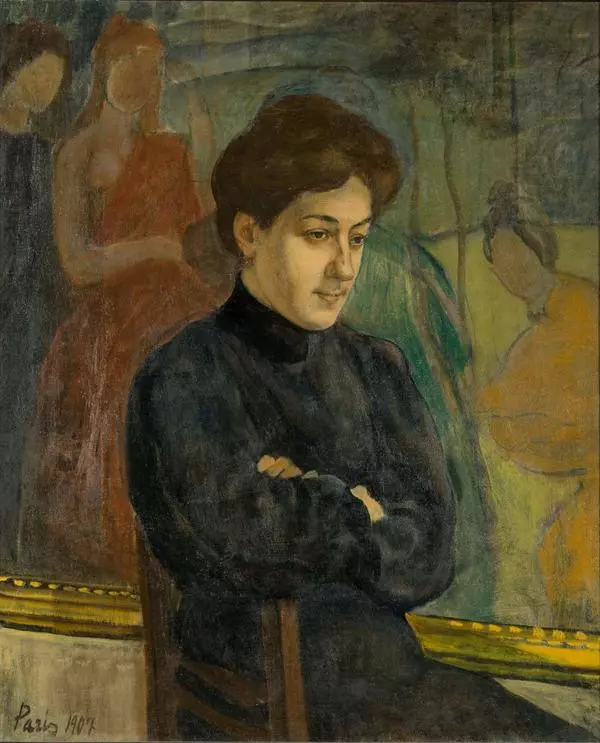The genre of still-life was of particular importance to Kuzma Sergeyevich Petrov-Vodkin: the artist even dedicated a separate chapter to it in his autobiographical work Euclid’s Space. There he gives an interesting definition of still-life as a heated conversation between the painter and nature. The author defined the basic requirement for still-life painting as follows: “What kind of object it is, where it is and where I am perceiving this object”. And the viewer looking at the picture should experience a pleasure from making new interesting discoveries in ordinary objects.
The artist always had a special love for still-lifes but especially often worked in this genre after the revolution, in 1918–1920. It was then that he created some of his most famous works: Violin, Pink Still-Life, Herring.
The present Still-Life (Fruit) dates back to the author’s late art: Petrov-Vodkin painted it 5 years before his death, in 1934. The laconic set of objects in the picture appears as a documentary chronicle of the era: a book, an open letter, several apples. Petrov-Vodkin also includes a glass tumbler in the composition, playing with half-tones and optical effects in the reflection.
In 1927, doctors diagnosed the painter with tuberculosis and forbade him to breathe paint, but he nevertheless returned to art work a few years later. In the same 1934, the author created one of his best works — 1919. Anxiety.
In his article dedicated to the 50th anniversary of the Simferopol Museum of Fine Arts, Crimean art critic Rudolf Podufaly described the originality of objects perception by Kuzma Sergeyevich and the laws according to which Still-Life (Fruit) was painted. In it he defined this picture as ‘a window in a bright, crystal clear and vivid world.’ When looking at the picture, the sharpness and unexpectedness of the composition immediately attracts attention, as if each object had not specifically ‘pose’ in front of the painter but lay naturally, casually.
Soft emission of light evokes associations with ancient Russian paintings.It is not created by chiaroscuro but by a combination of bright spots, the quantity and saturation of colour, as well as the artist’s unique fresco-like painting style. The most original distinguishing feature of this still-life is its colour: the tablecloth is pink, the apples are yellow, the notebook is blue and together they form the famous “three colours” of Petrov-Vodkin, which can be traced in a lot of his works.
The artist always had a special love for still-lifes but especially often worked in this genre after the revolution, in 1918–1920. It was then that he created some of his most famous works: Violin, Pink Still-Life, Herring.
The present Still-Life (Fruit) dates back to the author’s late art: Petrov-Vodkin painted it 5 years before his death, in 1934. The laconic set of objects in the picture appears as a documentary chronicle of the era: a book, an open letter, several apples. Petrov-Vodkin also includes a glass tumbler in the composition, playing with half-tones and optical effects in the reflection.
In 1927, doctors diagnosed the painter with tuberculosis and forbade him to breathe paint, but he nevertheless returned to art work a few years later. In the same 1934, the author created one of his best works — 1919. Anxiety.
In his article dedicated to the 50th anniversary of the Simferopol Museum of Fine Arts, Crimean art critic Rudolf Podufaly described the originality of objects perception by Kuzma Sergeyevich and the laws according to which Still-Life (Fruit) was painted. In it he defined this picture as ‘a window in a bright, crystal clear and vivid world.’ When looking at the picture, the sharpness and unexpectedness of the composition immediately attracts attention, as if each object had not specifically ‘pose’ in front of the painter but lay naturally, casually.
Soft emission of light evokes associations with ancient Russian paintings.It is not created by chiaroscuro but by a combination of bright spots, the quantity and saturation of colour, as well as the artist’s unique fresco-like painting style. The most original distinguishing feature of this still-life is its colour: the tablecloth is pink, the apples are yellow, the notebook is blue and together they form the famous “three colours” of Petrov-Vodkin, which can be traced in a lot of his works.
